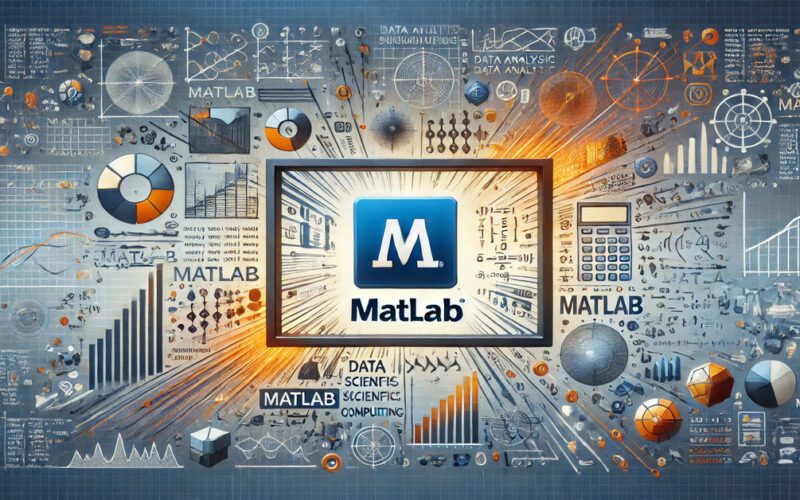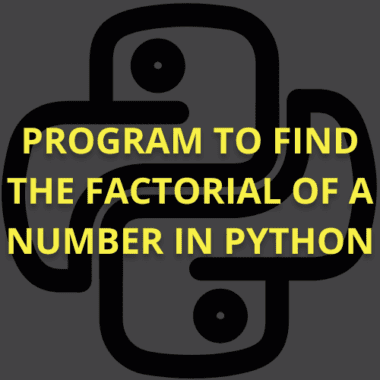Summary: MATLAB offers powerful numerical computing and visualisation features with extensive toolboxes for specialised applications. However, its high cost, reliance on toolboxes, and resource requirements make it less appealing for budget-conscious users.
Introduction
MATLAB is widely recognised for its versatility. In 2024, over 21,314 companies worldwide have adopted MATLAB as their preferred language tool for complex computations and model simulations.
This article examines MATLAB’s advantages and disadvantages, helping readers understand its benefits and limitations and decide whether it suits their research, education, or industry needs.
Key Takeaways
- MATLAB offers exceptional numerical computing and visualisation tools for diverse industries.
- Its specialised toolboxes save time but increase overall costs.
- The high price of the software can be a barrier for students and small organisations.
- MATLAB’s intuitive GUI simplifies workflows but has a steep learning curve for advanced features.
- Free alternatives like Python and R provide viable solutions for budget-conscious users.
What is MATLAB?
MATLAB, short for Matrix Laboratory, is a powerful high-level programming language and interactive environment designed for numerical computing, Data Visualisation, and programming. Engineers, scientists, and researchers widely use it to solve complex mathematical problems and develop algorithms efficiently.
Key Features
MATLAB stands out for its matrix-based language, which makes mathematical computations intuitive and straightforward. It excels at handling matrix operations, a core component of many scientific and engineering problems.
MATLAB seamlessly integrates programming, visualisation, and computation into a single platform. It allows users to analyse data, design algorithms, and create custom applications without switching between tools.
The platform offers an extensive library of built-in functions and specialised toolboxes for domains like signal processing, Machine Learning, and control systems. Its user-friendly interface and robust visualisation tools enable the creation of high-quality 2D and 3D plots, making it ideal for effectively presenting results.
Fields of Application
MATLAB’s versatility allows it to thrive across multiple fields, including engineering, scientific research, finance, image processing, and Machine Learning. In engineering, it aids in designing and simulating systems. In Data Science, it supports predictive modelling and analysis.
Why is MATLAB Popular?
MATLAB’s popularity stems from its ease of use and computational power. Its intuitive syntax, extensive documentation, and active user community make it accessible to beginners, while its advanced features cater to professionals solving complex problems. By offering a unified environment for computation, visualisation, and programming, MATLAB remains a top choice for academic and industrial applications.
Advantages of MATLAB
MATLAB is a versatile and powerful tool widely used in engineering, Data Analysis, and research. Its features make it a go-to platform for tasks ranging from numerical computations to visualisation. Here are the key advantages that set MATLAB apart from other computational tools:
User-Friendly Interface
MATLAB’s greatest strength is its intuitive Graphical User Interface (GUI). The workspace is designed to help users visualise variables, manage data, and streamline workflows.
The drag-and-drop functionality simplifies interactions, making it easier for beginners and professionals to perform tasks without extensive coding knowledge. MATLAB also offers a powerful debugging environment with breakpoints and step-by-step execution, helping users identify and fix errors efficiently. Coupled with its visualisation options, the interface ensures a smooth experience for complex computations.
Comprehensive Built-in Functions
MATLAB provides an extensive library of built-in functions covering various applications. From basic arithmetic to advanced numerical methods, these functions eliminate the need for users to code algorithms from scratch.
For domain-specific tasks, MATLAB offers specialised toolboxes, such as:
- Signal Processing Toolbox is used to analyse and design signal systems.
- Machine Learning Toolbox for building and training predictive models.
- Control Systems Toolbox is used to design controllers and simulate dynamic systems.
These toolboxes save significant time and effort, allowing users to focus on problem-solving rather than reinventing foundational methods.
Platform Independence
MATLAB is a platform-independent software that works seamlessly on Windows, macOS, and Linux systems. This compatibility makes it accessible to many users, regardless of their preferred operating system.
Moreover, MATLAB files are transferable across platforms without requiring modifications, ensuring flexibility for teams working in diverse environments. Its platform independence enhances collaboration and provides consistent performance.
Robust Support for Numerical Computation
At its core, MATLAB is designed to handle numerical computation with unparalleled efficiency. Its ability to perform complex matrix and vector operations makes it a favourite among engineers and mathematicians.
MATLAB excels in solving problems like:
- Linear algebra calculations.
- Differential equations.
- Optimisation tasks.
The software is optimised for high-performance numerical computing, enabling users to execute large-scale computations quickly and accurately. This makes it an ideal tool for research and industrial applications requiring precision and speed.
Excellent Visualisation Tools
MATLAB stands out for its exceptional visualisation capabilities. The platform allows users to create high-quality 2D and 3D plots with minimal effort. Whether you’re visualising data trends or presenting simulation results, MATLAB provides customisable options to meet your needs.
Users can:
- Customise graph aesthetics, including colours, labels, and legends.
- Create dynamic visualisations to analyse changes over time.
- Export high-resolution figures for reports and presentations.
This versatility makes MATLAB an invaluable tool for communicating complex data clearly and professionally.
Strong Community and Documentation
Thanks to its active community and extensive documentation, MATLAB has a robust ecosystem of support. The official MATLAB documentation covers everything from essential functions to advanced programming techniques. It includes examples, tutorials, and detailed explanations, making it easy for users to learn and troubleshoot.
The online MATLAB community adds another layer of support. Forums, blogs, and user-generated content provide solutions to common issues, share tips, and inspire creative software applications. This collaborative environment ensures that users are never alone when facing challenges.
Integration and Extensibility
MATLAB’s ability to integrate with other programming languages makes it highly adaptable. Users can combine MATLAB’s capabilities with the strengths of Python, C/C++, and Java. This flexibility is beneficial for projects that require multiple tools or legacy systems.
Additionally, MATLAB allows users to develop custom functions and applications tailored to specific needs. This extensibility ensures that MATLAB remains relevant for various tasks, from simple calculations to complex, large-scale projects.
Disadvantages of MATLAB
While MATLAB is a powerful tool with numerous benefits, it has drawbacks. Its limitations can impact users depending on their needs, budget, or technical requirements. Below, we delve into the disadvantages of MATLAB to help you better understand its shortcomings and make an informed decision.
High Cost
One of MATLAB’s most significant drawbacks is its high cost. Unlike free programming languages like Python or R, MATLAB requires users to purchase a license. This expense can be prohibitive for individuals, students, or small organisations with limited budgets.
Additionally, the cost doesn’t stop at the base software. MATLAB’s functionality heavily relies on specialised toolboxes tailored for specific industries and applications, such as Machine Learning or control systems.
Each toolbox comes with an additional fee, further increasing the financial burden. This cost factor often makes MATLAB less appealing for academic or casual users compared to free or open-source alternatives.
Limited Open-Source Support
MATLAB is proprietary software, which inherently restricts its flexibility and transparency. Users cannot access or modify the source code, limiting their ability to customise the software for unique needs.
This lack of open-source support can also hinder collaboration in research and development projects where transparency and adaptability are critical. Open-source languages like Python and R allow users to modify and share code freely, fostering a culture of innovation and community-driven growth. MATLAB’s closed environment makes such collaboration more challenging and less accessible.
Resource-Intensive
MATLAB demands high system resources for optimal performance. Running MATLAB on older or less powerful hardware can lead to slow execution times and lagging performance, especially when handling large datasets or complex simulations.
MATLAB often fails large-scale computations compared to compiled languages like C++ or Fortran, which are inherently faster and more efficient. This makes MATLAB less suitable for applications where speed and resource optimisation are critical, such as real-time systems or large-scale simulations.
Steep Learning Curve for Beginners
Although MATLAB provides a user-friendly interface, mastering its advanced features and specialised toolboxes can be challenging for new users. Those without a programming background may find it difficult to understand the syntax, navigate the environment, and fully utilise its capabilities.
Beginners often struggle with the sheer number of built-in functions and the complexity of writing efficient scripts. Unlike Python, which offers a gradual learning curve and abundant community resources, MATLAB’s steep learning curve can discourage new users, especially if they lack formal training or guidance.
Dependence on Toolboxes
MATLAB’s strength in specialised areas often comes from its extensive collection of toolboxes. However, this reliance can become a drawback. Many essential features are locked behind these additional packages, requiring users to purchase them separately.
This dependence can increase costs and make the software less versatile for users with limited budgets. Additionally, while MATLAB provides a wide range of built-in functions, users may still encounter niche problems where no pre-existing toolbox is available, forcing them to invest time and effort in custom development.
Limited Deployment Options
Deploying MATLAB applications for widespread use can be complicated and expensive. MATLAB Runtime allows for standalone applications, but even this requires the end user to download specific libraries or have access to a licensed environment.
Moreover, MATLAB is less suited for mobile or web-based applications than modern frameworks and tools like JavaScript, Python, or Java. This limitation makes it less appealing for developers focused on creating lightweight, scalable, or web-centric solutions.
Limited Community Support Compared to Alternatives
While MATLAB has a dedicated user base and good official documentation, its community is smaller than open-source programming languages like Python. This means fewer freely available resources, tutorials, and third-party libraries.
Open-source communities thrive on collaboration, making finding solutions to problems easier or adapting existing tools for specific projects. MATLAB users often rely on MathWorks’ official support, which can be slower and less dynamic than community-driven alternatives. This limitation can hinder productivity, especially when users face unique or complex issues.
Comparison with Alternatives
MATLAB has established itself as a powerful tool for numerical computing and visualisation. However, with the rise of open-source alternatives like Python and R, users now have multiple options depending on their requirements. This section compares MATLAB with these tools and highlights its strengths and weaknesses.
MATLAB vs. Python
Python is a popular alternative to MATLAB, especially for users seeking cost-effective solutions. Python offers a rich ecosystem of libraries such as NumPy, SciPy, Matplotlib, and Pandas, which replicate MATLAB’s core functionalities. Unlike MATLAB, Python is free and open-source, making it an attractive option for individuals and organisations with budget constraints.
MATLAB excels in its user-friendly interface and seamless integration of built-in functions, particularly for tasks involving matrix manipulations and high-quality visualisations. Python, while flexible, requires additional setup and third-party libraries to achieve similar capabilities. However, Python outshines MATLAB in versatility, offering web development, automation, and deep learning features through frameworks like TensorFlow and PyTorch.
MATLAB vs. R
R is a specialised tool designed primarily for statistical analysis and Data Visualisation. It is widely used in academia, bioinformatics, and research-oriented fields. Compared to MATLAB, R is more adept at handling large datasets for statistical modelling and Machine Learning.
Conversely, MATLAB provides a broader scope, supporting control systems, signal processing, and robotics applications. R’s steep learning curve can deter beginners, whereas MATLAB’s intuitive GUI simplifies learning. However, R’s open-source nature and extensive community packages make it a cost-effective and customisable choice for statistical analysis.
MATLAB vs. Other Tools
Other tools, such as Octave and Julia, compete with MATLAB. GNU Octave, a free alternative, mimics MATLAB’s syntax but lacks advanced features and a polished interface. Julia, designed for high-performance numerical computation, combines speed with ease of use, making it a strong contender in scientific computing.
However, MATLAB’s ecosystem of toolboxes and extensive documentation gives it a competitive edge in professional and academic settings.
Wrapping Up
MATLAB is a versatile tool with robust features for numerical computing, Data Visualisation, and algorithm development. Its intuitive interface, extensive toolboxes, and cross-platform compatibility make it a top choice for research and industry.
However, its high cost, reliance on toolboxes, and steep learning curve may deter some users. Evaluate your needs to decide if MATLAB suits your goals.
Frequently Asked Questions
What are the Main Advantages of MATLAB?
MATLAB excels with its user-friendly interface, robust visualisation tools, and specialised toolboxes for diverse fields like engineering, Data Science, and Machine Learning, streamlining complex computations and analysis.
What are the Disadvantages of MATLAB Over Python?
MATLAB is costly and resource-intensive, while Python is free and versatile. MATLAB offers superior visualisation, but Python supports broader applications like web development and automation with free libraries.
Why is MATLAB Preferred in Research and Industry?
MATLAB provides a unified platform for computation, visualisation, and programming. Its extensive documentation, active community, and specialised toolboxes ensure accuracy and efficiency for professional applications.




